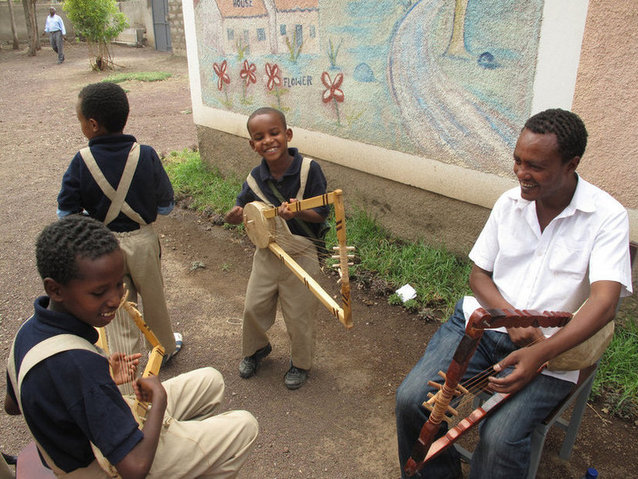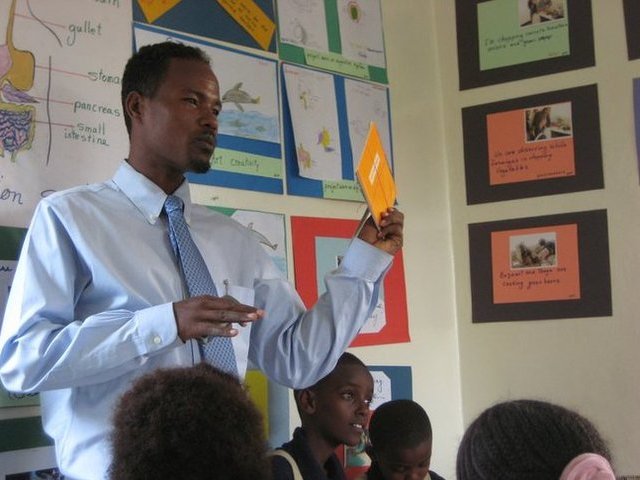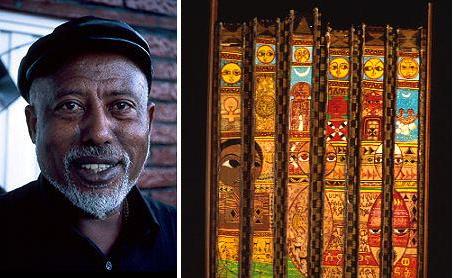Tadias Magazine
By Tadias Staff
Published: Tuesday, February 11th, 2014
New York (TADIAS) — Dr. Yared Tekabe, a research scientist at Columbia University, has been working on groundbreaking non-invasive detection of heart diseases such as atherosclerosis — the building up of plaque in your arteries — which can lead to heart attack or stroke. After developing a tracer that could show the presence of a receptor called RAGE in areas where tissues were inflamed, Tekabe and his colleagues have now moved from detection and diagnostics to applying anti-RAGE antibodies for therapeutic purposes.
“Until now we were focusing on early diagnosis of heart diseases using our anti-RAGE antibody to detect diseases such as atherosclerosis and cardiomyopathy — a condition where muscle tissue of the heart becomes enlarged or rigid leading to irregular heartbeat or heart failure,” says Tekabe in a recent interview with Tadias. “At the time we didn’t realize the therapeutic potential for the antibody.”
Now anti-RAGE antibodies have become a game-changer as RAGE has been implicated in up to 12 diseases including diabetes, cancer, metabolic disorders and chronic inflammation.
Tekabe initially sent anti-RAGE antibody to his former advisor at Northeastern University who conducts research on human cancer cells and asked him to study the effect of the antibody on human tissue culture. His advisor had used three cell lines including those for human prostate cancer, sensitive ovarian cancer, and multi-drug resistant ovarian cancer.
“One of the problems in cancer treatment is that there is drug resistance, and we wanted to use the antibody on these cells. We found that 70% of the multi-drug resistant ovarian cancer cells died!” Yared exclaims. “So the antibody has brought really good results. If you ask what is the next step, I would say that we would like to study its therapeutic possibility on animal models.”
Another primary study conducted by Tekabe using anti-RAGE antibody focuses on complications of late stage diabetes such as ischemia. “In individuals that have diabetes they often undergo hand and leg amputations due to poor blood circulation,” Tekabe explains. “So what I did was to make mice have high blood glucose and induce diabetes and ligated or bound their femoral artery to restrict circulation.” The mice were then treated with anti-RAGE antibody and compared to a control group that didn’t receive the antibody treatment. Tekabe and his colleagues were surprised to find that the treated mice showed new blood vessels were forming in their hindlimb. In effect the ischemia caused by late stage diabetes was being reversed.
“We looked to see if this antibody treatment also reversed the high blood glucose level or affected body weight of the diabetic mice, but we didn’t find any significant changes in these two factors,” Tekabe adds. However, the formation of new blood vessels is a significant finding that points to the possible therapeutic use of the antibody for human diabetic patients, a promising therapy for those who may otherwise have to undergo amputations.
Tekabe’s research was recently published in the European Journal of Nuclear Medicine and Molecular Imaging. “Moving forward we hope to continue the research and advance to human diabetic treatment, after humanizing the antibody first” he says. “We are also looking at possible therapeutic uses of the antibody for other conditions including kidney failure and heart failure, which are also often diagnosed in late stage diabetic patients.”
Tekabe and his colleagues are currently securing additional funds to get a second patent for this research and focus on using the antibody for theranostics — both diagnostic and therapeutic purposes.
—
Related:
Yared Tekabe Uses Molecular Imaging for Early Detection of Heart Disease
Yared Tekabe’s Groundbreaking Research in Heart Disease





